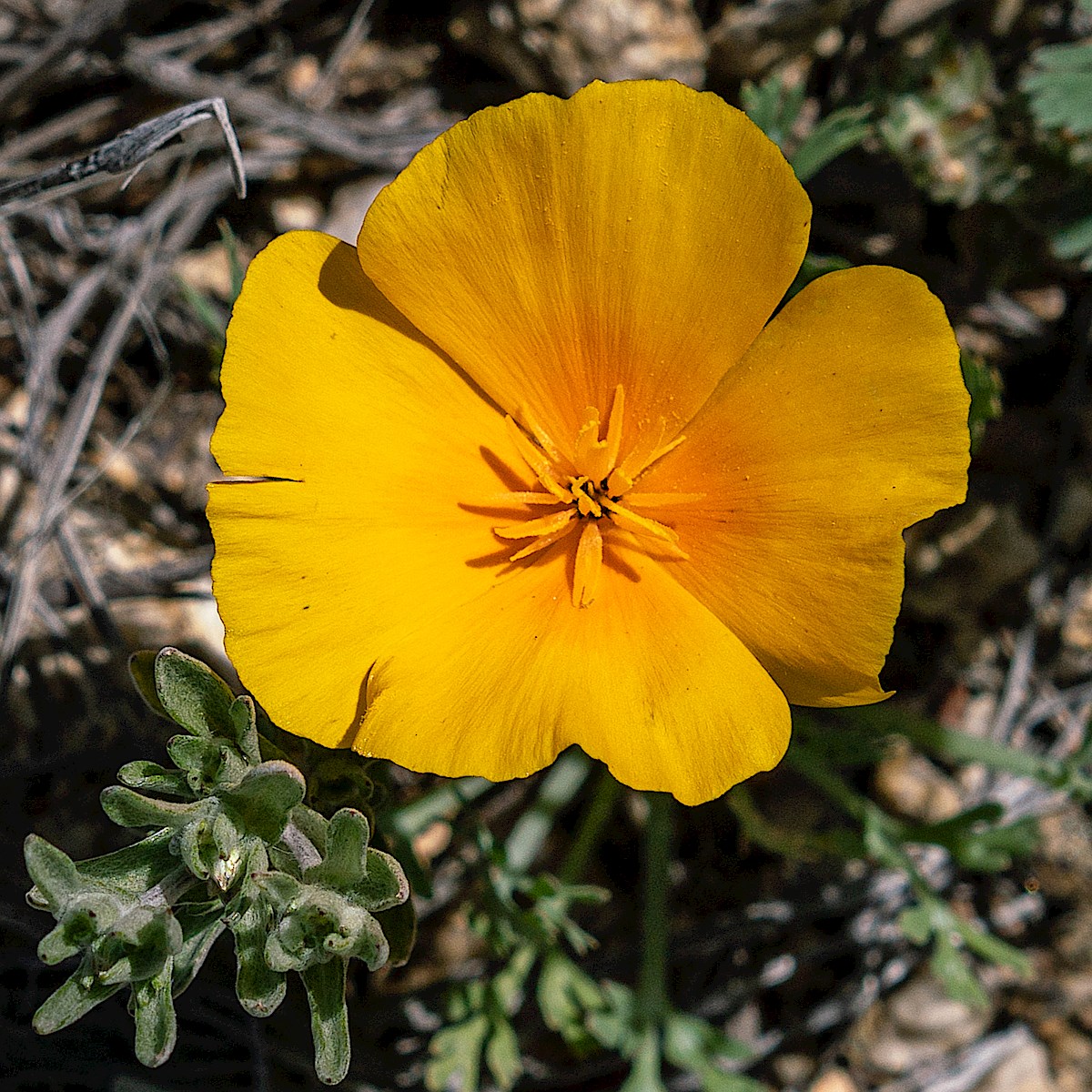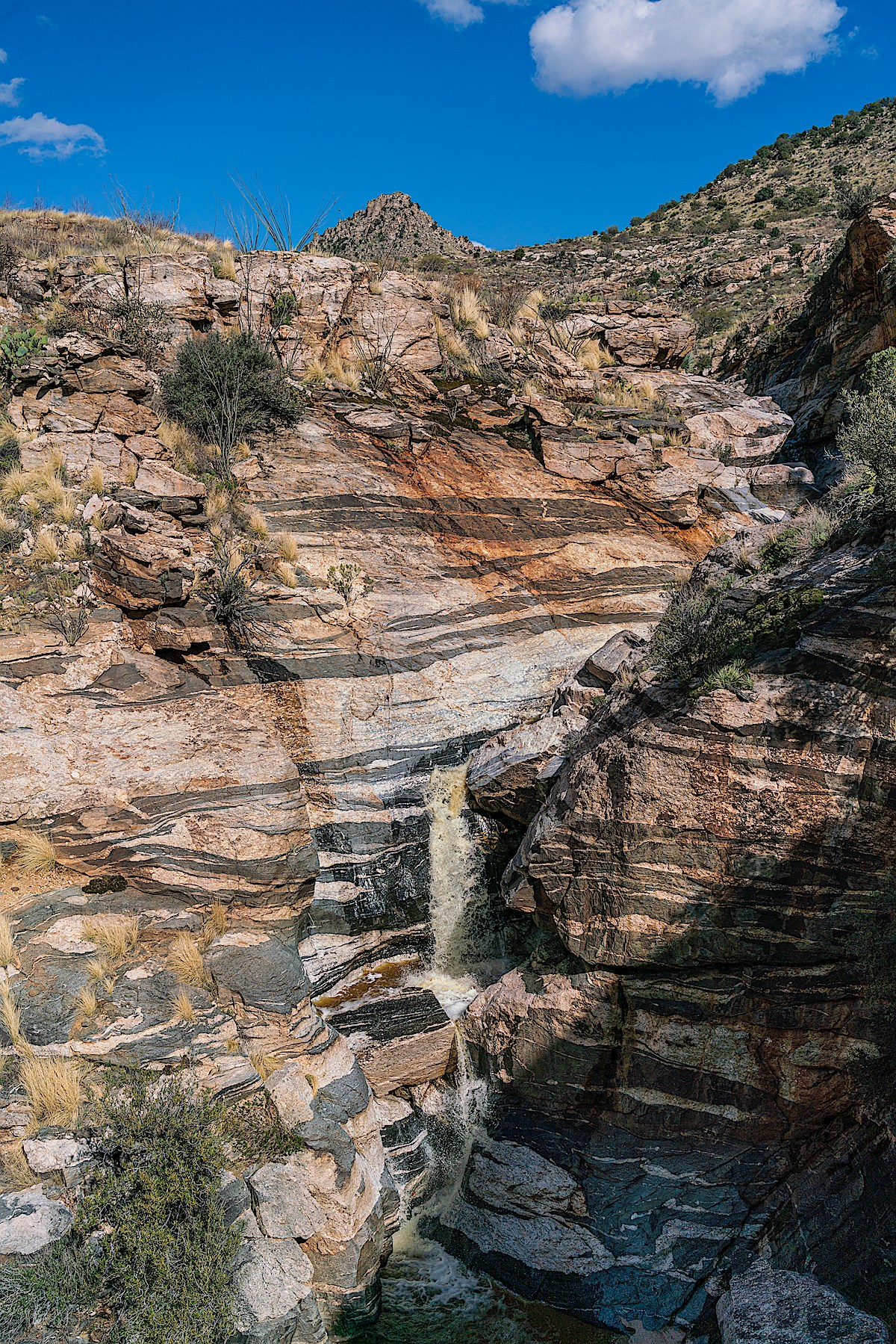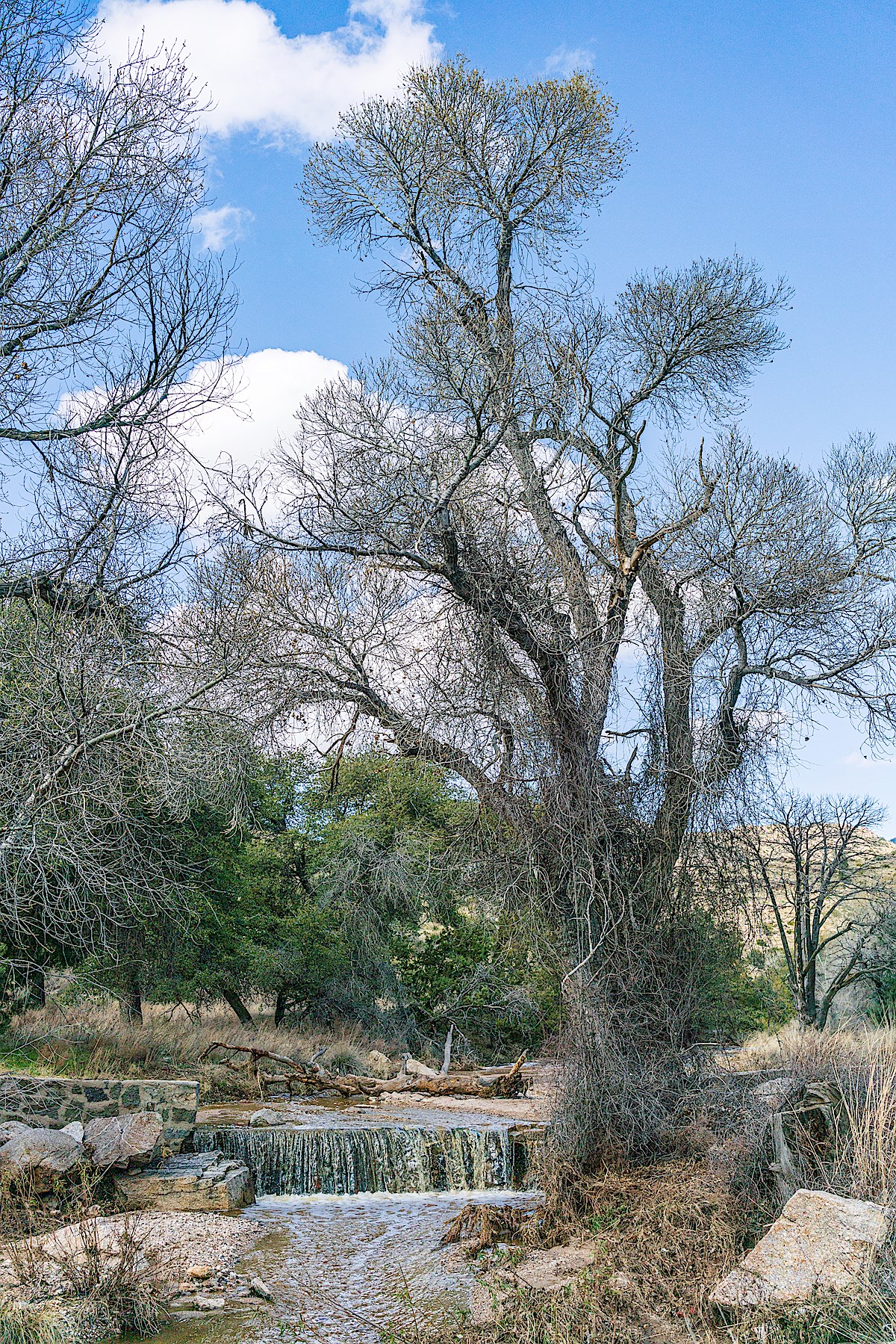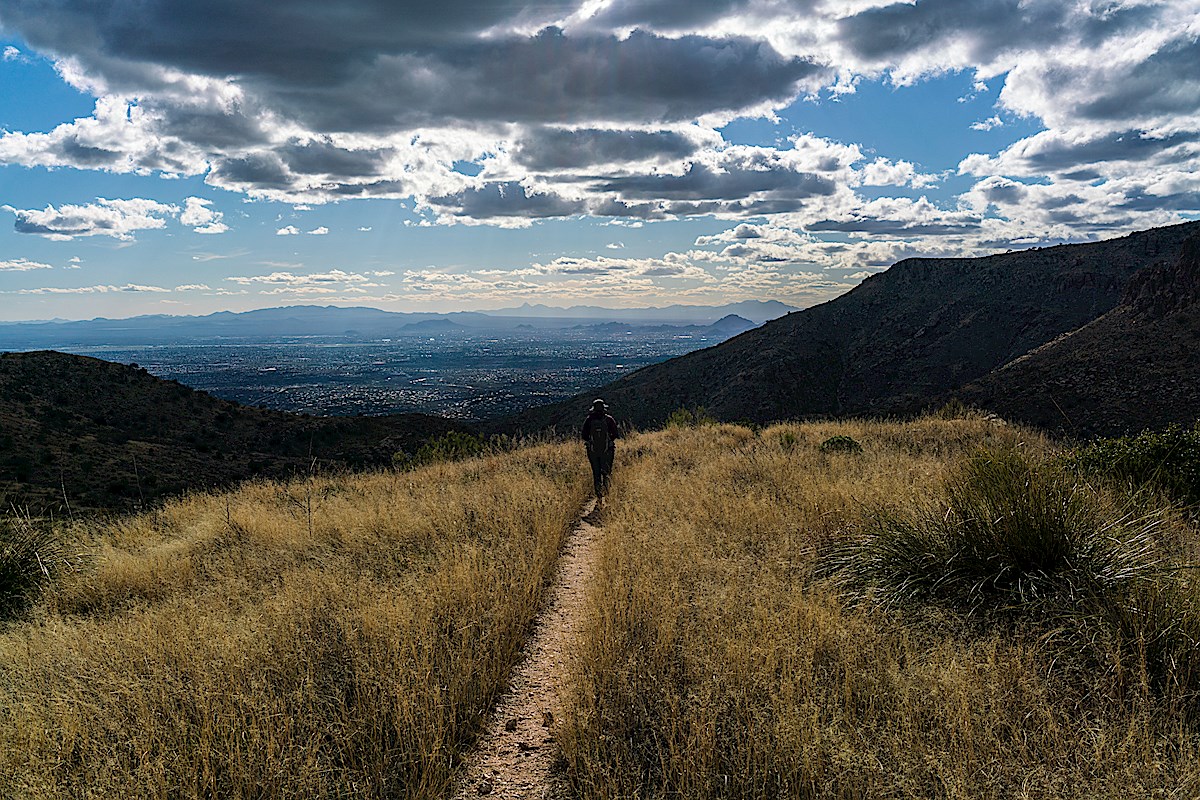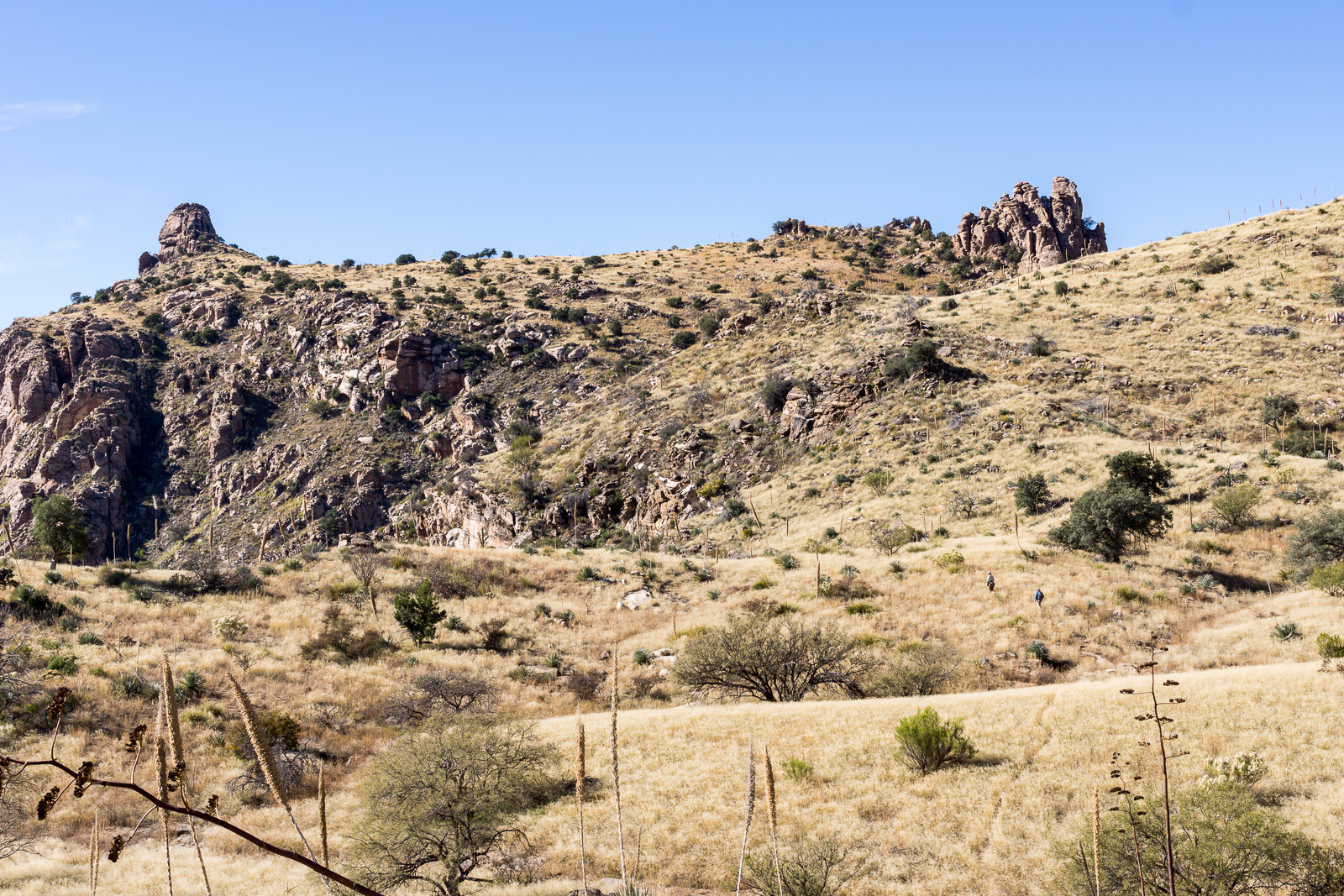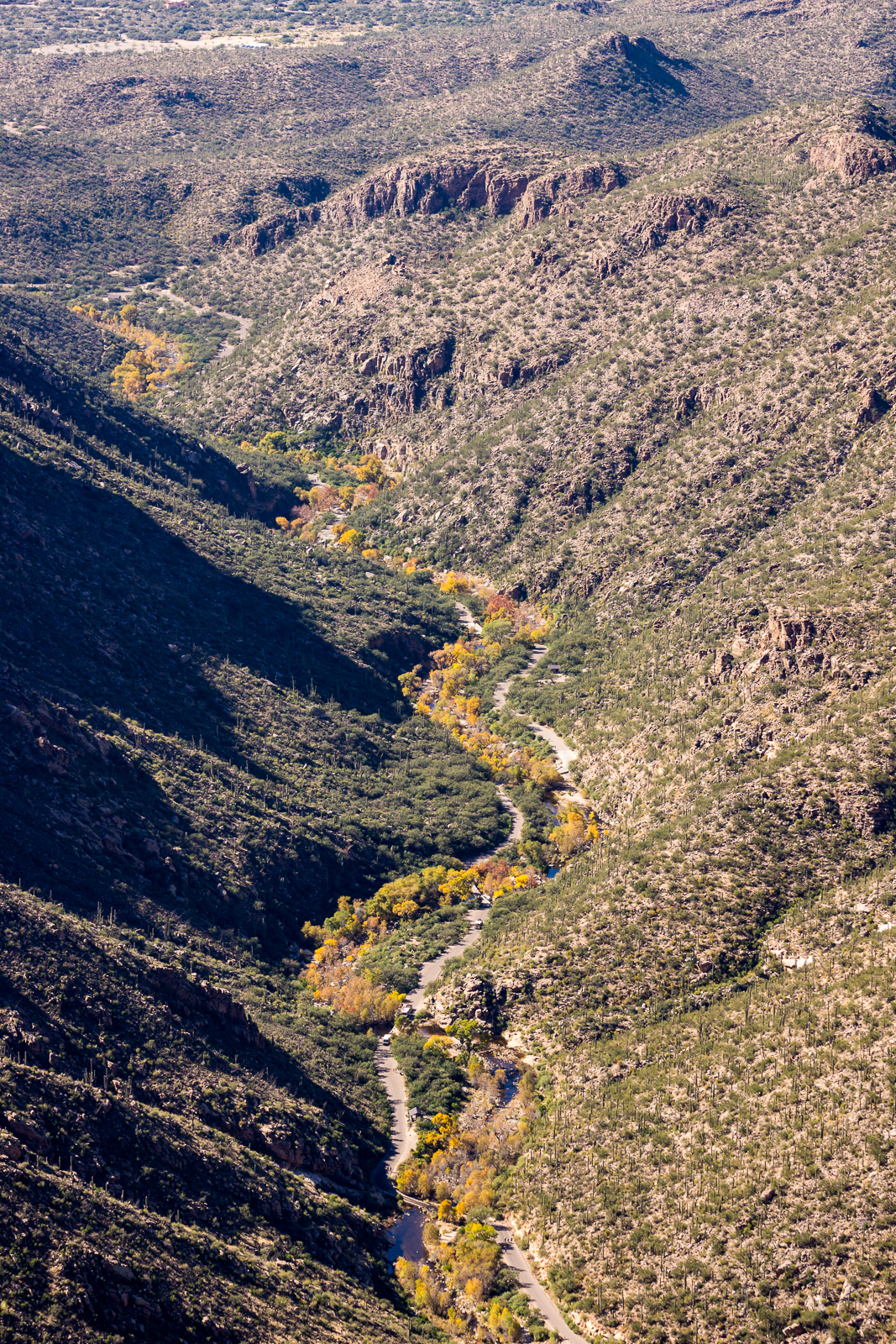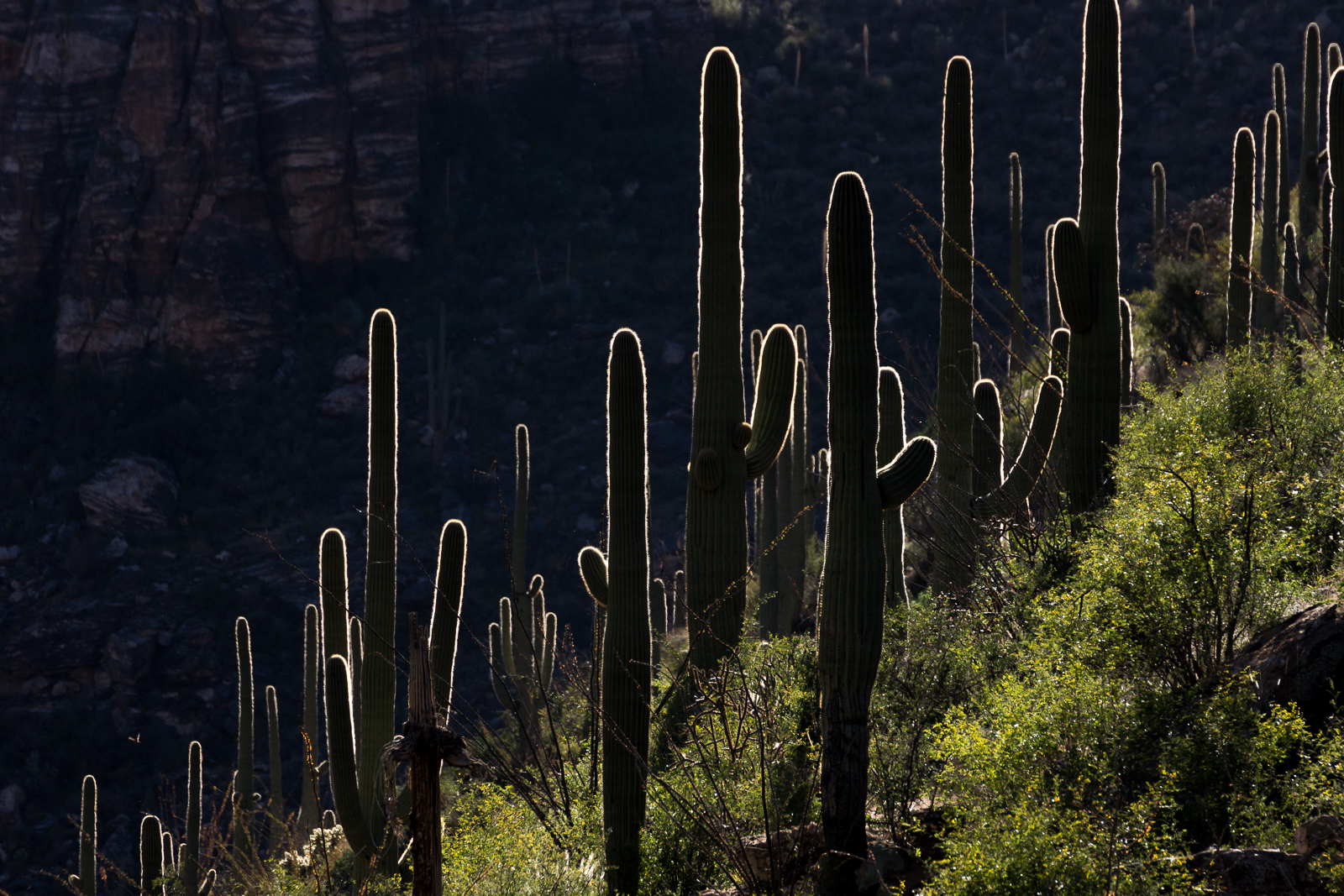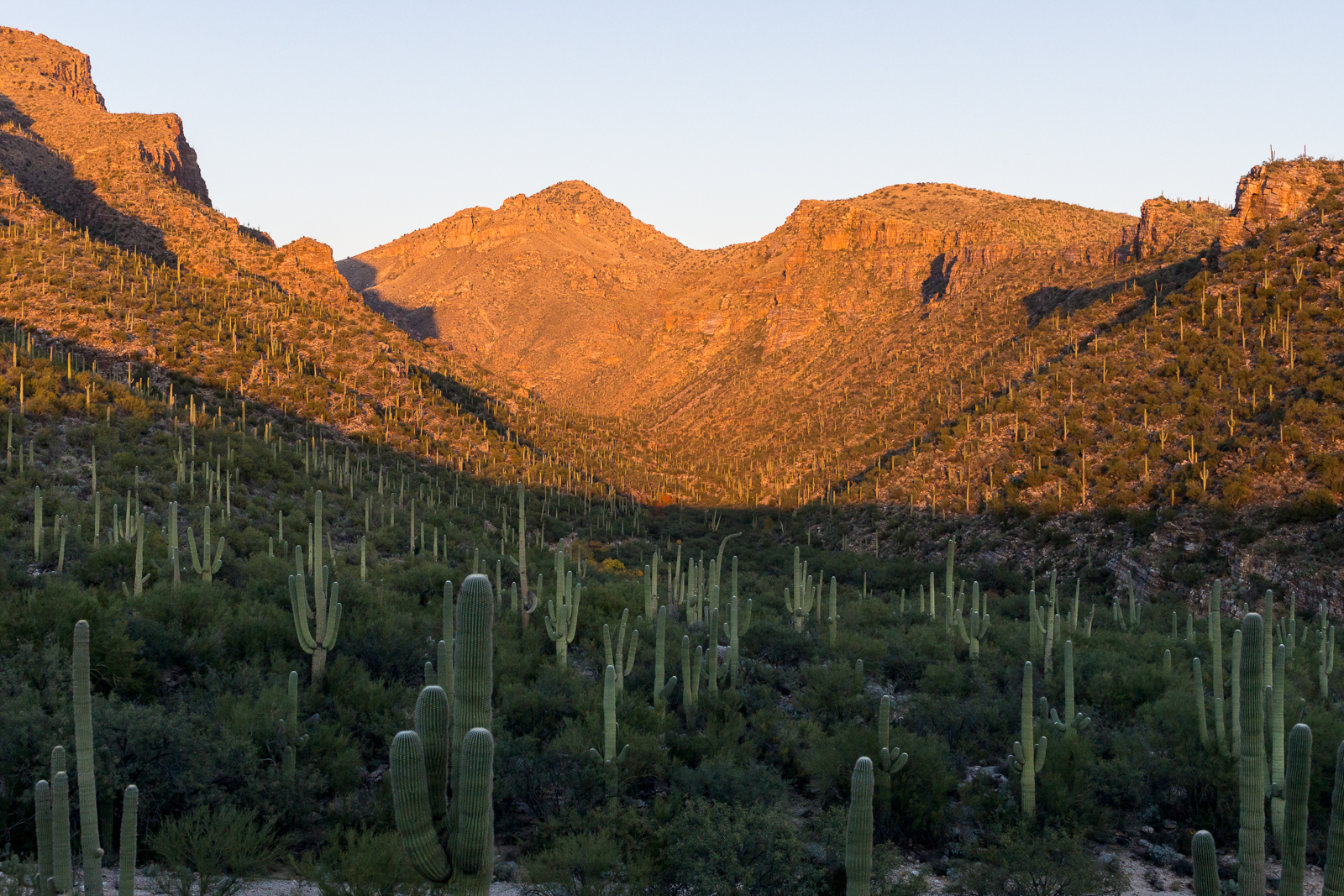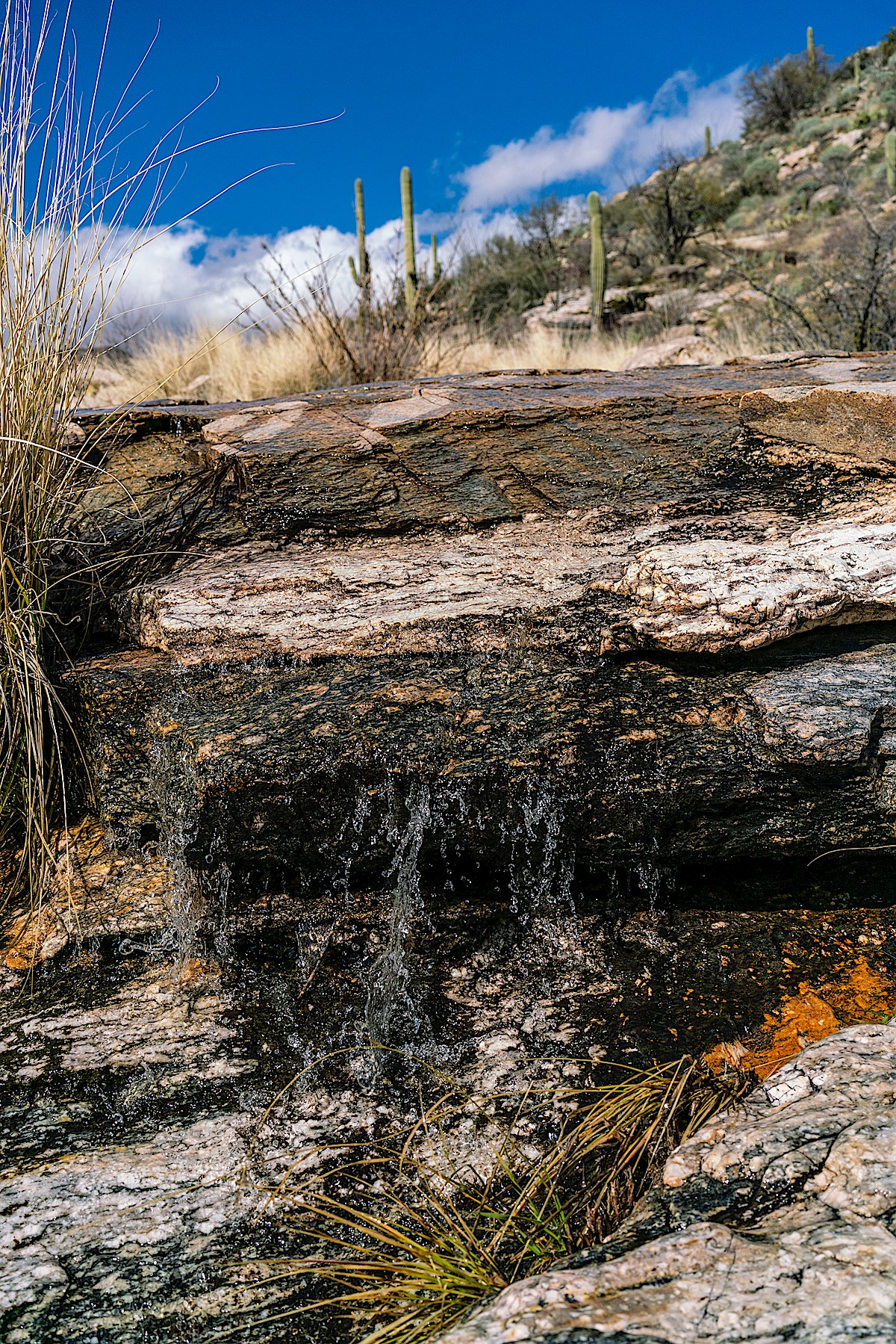
Periods of meditation are Quaker in style and spirit. Under the open sky and hills, we feel very close to the nature of things. Life becomes meaningful in a vivid way.
More images from 2018/2019’s wet winter – this time from Soldier Trail – the highlight of this hike was seeing the rushing falls in Soldier Canyon and, more of a surprise, seeing the water pouring over the rock structure near the junction of the Soldier and Molino Basin Trails.
Soldier Trail takes its general route from an old powerline and road to the prison camp that provided labor for the construction of the General Hitchcock Highway. Highway construction began in 1933 with the prisoners originally in temporary housing at the base of the mountain – in 1939 the camp moved up to the Vail’s Corral area where the remains of the prison can still be seen.
During WWII the Catalina Federal Honor Camp housed draft resistors and conscientious objectors – including Jehovah’s Witnesses, Mennonites and Hopi – in addition to prisoners convicted of federal crimes such as immigration-law violations, tax evasion and bank robbery. The first version of the General Hitchcock Highway was completed in 1951. Before being torn down in the early 70s the prison site served as a juvenile prison, was turned over to the State of Arizona and housed Forest Service crews.
In 1999 the prison site was renamed the Gordon Hirabayashi Recreation Site. Gordon Hirabayashi was one of the approximately 45 Japanese American draft resisters who were sent to the camp during WWII. Committed to non-violent resistance to the unconstitutional racially motivated curfew on, and removal of, Japanese Americans during WWII he served 90 days at the Catalina Federal Honor Camp after his initial conviction was unanimously upheld by the Supreme court in 1943. It would be over 40 years before a 1987 Ninth Circuit Court of Appeals ruling finally overturned his wrongful conviction.
- Street Smarts: Road named for old prison camp
- Densho Encyclopedia – Tucson (dentention facility)
- Densho Encycolpedia – Gordon Hirabayashi
- Confinement and Ethnicity: An Overview of World War II Japanese American Relocation Sites
- Site of prison camp renamed for inmate interned during WWII
If you want to read more there are a number of interesting articles online – a few are listed above – but I also highly recommend A Principled Stand, The Story of Hirabayashi v. United States by Gordon K. Hirabayashi with James A. Hirabayashi and Lane Ryo Hirabayashi. Published in 2013 the book is a collection of Gordon Hirabayashi’s writings and letters – published and unpublished – that have been selected and edited by James A. Hirabayashi, Gordon’s bother, and Lane Ryo Hirabayashi, Gordon’s Nephew.
Of particular interest to readers of this site may be the chapter on the Catalina Federal Honor Camp – a few quotes:
Page 150:
There are approximately two hundred inmates, and most are engaged in constructing a road to the mountain resort at the top of the hill. I joined the road crew that worked crushing and shoveling rocks into a dump truck, which was quite monotonous and a non-incentive activity, I assure you.
Consequently, by November 1943, at my request, I was transferred to the baking department. There I became “adept” at mixing, rolling, and baking bread, learning the techniques for various rolls, pies, cakes, etc. I hope to learn something by the time I leave.
Page 152:
There were a lot of Mexican border jumpers … , quite a few selective service cases, many Jehovah’s Witnesses, several pacifists of the FOR type. The latter group was the most aesthetic in appreciation, and I joined them once in climbing a little hill back of the camp to gaze at the beautiful, indescribable Arizona sunsets. The Native Indians were of two types. One type, which included many traditional Hopis, was objecting to being drafted into a white man’s war.
Page 154:
A group of us retreat to our favorite meditation spot for a refreshing, stimulating period of quiet. My thoughts: There is no excuse for tolerating injustice or violation of the brotherhood of man merely because we are incarcerated.
One part of the Hirabayashi family’s history that has been stuck in my mind is the story of the White River Garden. A Principled Stand, page 16:
In 1919, four families of the Pontiac collective, including two Hirabayashi families—my father’s family and the Toshiharu Hirabayashi family—moved to Thomas, Washington, a rural community twenty miles south of Seattle. These families formed a Christian cooperative, White River Garden, and purchased forty acres of land. Then the difficult development process began: clearing the land of stumps, digging ditches for better drainage, fertilizing the soil, cultivating, and building their homes.
At the time Washington’s Alien Land Law prevented non-citizens from owning land – so the White River Garden purchase was made in the name of the oldest child born in the United States – Aiko Katsuno, 10 years old at the time. Government officials felt this arrangement was an illegal subversion of the law and after a victory in the Washington Supreme Court Washington State took the land back from the White River Garden Corporation. The families were forced to lease the land in order to stay and work the property they had developed.
It wasn’t until the early 1950s that the Supreme Court ruled that forbidding aliens from owning land was a violation of the 14th Amendment’s equal protection clause. The White River Valley Museum has several photographs from White River Garden including a photograph of the White River Garden families and friends including a young Gordon Hirabayashi!
